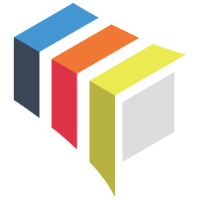QUESTIONS? CALL:
+1 (833) BOODSKAp
IoT in Agriculture: Technology Use Cases for Smart Farming and Challenges to Consider | Mia Palmer
IoT in Agriculture: Technology Use Cases for Smart Farming and Challenges to Consider
- In the rapidly evolving world of agriculture, IoT (Internet of Things) technology is transforming traditional farming practices into highly efficient, data-driven operations. By leveraging IoT solutions, farmers can monitor and manage their crops and livestock in real-time, leading to increased productivity, reduced resource usage, and enhanced sustainability. Boodskap's IoT Platform as a Service (PaaS) provides comprehensive tools and solutions to harness the full potential of IoT in agriculture. In this blog, we explore the various use cases of IoT in agriculture and the challenges that need to be addressed for widespread adoption
- Precision agriculture uses IoT technology to monitor soil and crop conditions continuously. Boodskap’s platform integrates soil moisture sensors, nutrient sensors, and weather sensors to collect real-time data. This data is analyzed to provide actionable insights on irrigation, fertilization, and crop management. Farmers can make informed decisions to optimize crop yield and reduce resource wastage.
- Devices and Sensors: Soil moisture sensors, nutrient sensors, weather sensors, GPS-enabled tractors.
- IoT Protocols: LoRaWAN, Zigbee, NB-IoT, MQTT.
- Smart irrigation systems adjust watering schedules based on real-time soil moisture and weather data. Boodskap’s platform uses soil moisture sensors and weather stations to collect data, ensuring crops receive the optimal amount of water. This leads to water conservation, improved crop health, and reduced irrigation costs.
- Devices and Sensors: Smart sprinklers, automated irrigation systems, soil moisture sensors, weather sensors.
- IoT Protocols: LoRaWAN, Zigbee, Wi-Fi.
- IoT technology enables continuous monitoring of livestock health and location. Boodskap’s platform integrates GPS-enabled collars and biometric sensors to collect data on animal health metrics such as temperature and heart rate. This helps farmers detect illnesses early, improving livestock health and reducing veterinary costs.
- Devices and Sensors: GPS collars, health monitoring devices, biometric sensors, temperature sensors.
- IoT Protocols: LoRaWAN, Zigbee, NB-IoT, MQTT.
- Greenhouse automation systems use IoT sensors to monitor and control environmental conditions such as temperature, humidity, and light. Boodskap’s platform automates climate control, lighting, and irrigation, ensuring optimal growing conditions for plants, leading to increased productivity and reduced energy consumption.
- Devices and Sensors: Climate control systems, automated ventilation, smart lighting systems, soil moisture sensors.
- IoT Protocols: Zigbee, Wi-Fi, BACnet.
- Continuous monitoring of soil health is crucial for sustainable agriculture. Boodskap’s platform integrates soil health monitors, nutrient analyzers, and soil probes to collect data on soil moisture, pH, and nutrient levels. This information helps farmers optimize soil management practices, enhancing crop productivity and reducing fertilizer costs.
- Devices and Sensors: Soil health monitors, nutrient analyzers, soil probes, pH sensors.
- IoT Protocols: LoRaWAN, Zigbee, NB-IoT.
- Accurate weather data is essential for effective farm management. Boodskap’s platform collects data from weather stations equipped with temperature, humidity, and wind speed sensors. This data is analyzed to provide real-time weather forecasts, helping farmers plan planting, irrigation, and harvesting schedules.
- Devices and Sensors: Weather stations, anemometers, rain gauges, temperature sensors.
- IoT Protocols: Zigbee, LoRaWAN, NB-IoT, MQTT.
- While IoT offers numerous benefits for agriculture, several challenges need to be addressed for its widespread adoption:
- Connectivity Issues: Ensuring reliable connectivity in remote and rural areas is crucial for the effective implementation of IoT solutions.
- Data Security: Protecting the vast amounts of data collected by IoT devices from cyber threats is essential.
- Cost of Implementation: The initial cost of deploying IoT technology can be high, posing a barrier for small-scale farmers.
- Technical Knowledge: Farmers need to be educated and trained on how to use and maintain IoT devices and platforms effectively.
- Integration with Existing Systems: Seamlessly integrating IoT solutions with existing farming equipment and practices can be challenging.
- IoT technology has the potential to revolutionize agriculture by providing real-time data, optimizing resource usage, and enhancing decision-making processes for farmers. Boodskap’s IoT platform offers comprehensive solutions to address various agricultural challenges, helping farmers improve productivity, reduce costs, and ensure sustainable farming practices. As the technology continues to evolve, the adoption of IoT in agriculture will play a crucial role in shaping the future of farming.
- For more information on how Boodskap’s IoT Platform can transform your agricultural operations, visit Boodskap.io.

